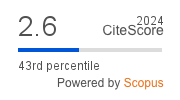Trends in Research on Artificial Intelligence in Anesthesia: A VOSviewer -Based Bibliometric Analysis
DOI:
https://doi.org/10.4114/intartif.vol25iss70pp126-137Keywords:
Network analysis, Artificial Intelligence, General Anesthesia, Bibliometric AnalysisAbstract
Background: The scientific literature on Artificial Intelligence (AI) in anesthesia is rapidly growing. Considering that applications of AI strategies can offer paramount support in clinical decision processes, it is crucial to delineate the research features. Bibliometric analyses can provide an overview of research tendencies useful for supplementary investigations in a research field. Methods: The comprehensive literature about AI in anesthesia was checked in the Web of Science (WOS) core collection. Year of publication, journal metrics including impact factor and quartile, title, document type, topic, and article metric (citations) were extracted. The software tool VOSviewer (version 1.6.17) was implemented for the co-occurrence of keywords and the co-citation analyses, and for evaluating research networks (countries and institutions). Results: Altogether, 288 documents were retrieved from the WOS and 154 articles were included in the analysis. The number of articles increased from 4 articles in 2017 to 37 in 2021. Only 34 were observational investigations and 7 RCTs. The most relevant topic is “anesthesia management”. The research network for countries and institutions shows severe gaps. Conclusion: Research on AI in anesthesia is rapidly developing. Further clinical studies are needed. Although different topics are addressed, scientific collaborations must be implemented.
Downloads
Metrics
Downloads
Published
How to Cite
Issue
Section
License
Copyright (c) 2022 Iberamia & The Authors

This work is licensed under a Creative Commons Attribution-NonCommercial 4.0 International License.
Open Access publishing.
Lic. under Creative Commons CC-BY-NC
Inteligencia Artificial (Ed. IBERAMIA)
ISSN: 1988-3064 (on line).
(C) IBERAMIA & The Authors










